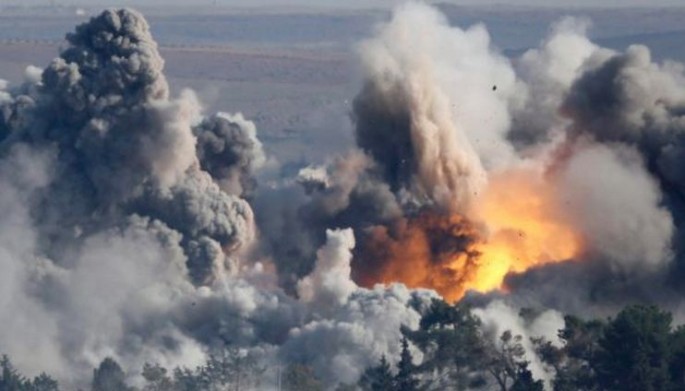The unremitting intensity of the United States' aerial bombardment of Isis targets in Iraq and Syria has caused a new problem for the U.S.: a bomb shortage.
The U.S. Air Force, the U.S. Navy and its dozen allies have struck Isis targets since August 2014 and until March 1 had flown nearly 1,500 airstrikes in Iraq and almost 1,200 in Syria.
The coalition has dropped more than 3,000 bombs on Isis targets, said the Combined Joint Task Force Operation Inherent Resolve, which is overseeing the bombing campaign.
Most of these bombs are sophisticated smart bombs either guided by GPS (Joint Direct Attack Munitions) or laser-guided (Hellfire).
After six months of unrelenting airstrikes across northern Iraq and Syria that shows no signs of abating, the U.S. military and its allies are replenishing its bomb stockpiles, said a senior Pentagon official.
While not officially admitting the U.S. was running short of bombs, some U.S. officials said the U.S. wants to ensure that the supply of bombs in the U.S. and overseas can meet current and future strikes against Isis.
That the U.S. should show a sharp concern for the number of bombs it has left is the result of three years of reduced weapon spending because of federal budget caps and the withdrawal of combat forces in Iraq and Afghanistan.
"I wouldn't say we're running out of weapons but I'd say we're using weapons at a pretty good rate in northern Iraq and in Syria," said U.S. Air Force Lt. Gen. James Holmes, deputy chief of staff for strategic plans and requirements in early February.
"The U.S. is looking at its stockpiles, in some cases, to make sure we have adequate munitions," said Frank Kendall, the Pentagon's acquisition chief as quoted by The Mirror. His remarks seem to suggest there is a need for the U.S. to ramp-up its production of bombs.
Asked if U.S. companies can meet the increased demand for bombs, Kendall said he believes "industry is prepared to be responsive as much as they can within their capacity to support us."
The USAF plans to spend more than $700 million on 5,567 Hellfire missiles in 2016. It also plans to spend $559 million to buy nearly 13,000 Joint Direct Attack Munitions, said the DefenseOne website.
The U.S. military expects the airstrikes to continue at the current pace for the immediate future.



























